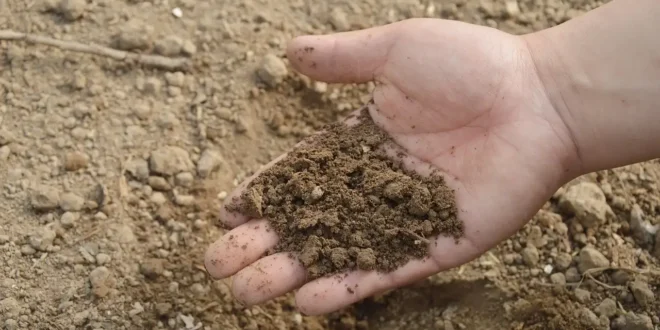Soil health plays a pivotal role in sustaining ecosystems, agricultural productivity, and environmental balance. In this informative blog post, we delve into effective soil remediation techniques aimed at rejuvenating degraded soil and fostering a sustainable environment.
Understanding Soil Degradation
1. Causes of Soil Degradation
Soil degradation can result from various factors, including erosion, chemical contamination, compaction, salinization, and loss of organic matter. Identifying the contributing factors is essential in formulating targeted remediation strategies.
2. Impacts on Ecosystems
Degraded soil compromises the fertility, water retention capacity, and structural integrity vital for supporting plant growth and biodiversity. Addressing soil degradation through remediation techniques is crucial for preserving ecosystems and promoting ecological resilience.
Innovative Soil Remediation Techniques
1. Phytoremediation
Harnessing the natural capabilities of plants to uptake, metabolize, and accumulate contaminants, phytoremediation offers a sustainable approach to mitigating soil pollution. Selective plant species effectively absorb and detoxify pollutants, facilitating soil restoration in both agricultural and industrial settings.
2. Bioremediation
Utilizing microorganisms such as bacteria, fungi, and algae to degrade, transform, or sequester contaminants, bioremediation stands as a cost-effective and eco-friendly strategy for remediating soil pollution. Microbial activity aids in breaking down organic pollutants and restoring soil functionality.
3. Soil Solarization
Employing solar radiant heat to elevate soil temperatures and reduce pathogenic organisms, pests, and weed seeds, soil solarization is a non-chemical method for enhancing soil health and preparing land for cultivation. This technique promotes the elimination of detrimental soil pathogens while preserving soil structure.
4. Composting
By recycling organic waste materials into nutrient-rich compost, composting enriches soil with essential organic matter, enhances microbial activity, and improves soil structure. Integrated into agricultural practices, composting fosters sustainable soil management and promotes fertility restoration.
5. Soil Aeration
Addressing soil compaction through mechanical or biological means, soil aeration enhances air and water movement within the soil profile, facilitating improved root growth, nutrient uptake, and overall soil health. Adequate aeration is fundamental in reversing the impacts of compaction and restoring soil vitality.
Sustainable Practices for Long-Term Impact
1. Agroforestry Integration
Integrating trees and shrubs within agricultural landscapes enhances soil stability, nutrient cycling, and biodiversity, safeguarding against erosion and promoting sustainable land use. Agroforestry systems contribute to long-term soil health restoration and ecological balance.
2. Precision Agriculture
Leveraging technological advancements for precise nutrient application, irrigation management, and soil monitoring, precision agriculture optimizes resource utilization, minimizes environmental impact, and fosters soil regeneration for sustainable crop production.
3. Wetland Restoration
Reinstating natural wetland ecosystems aids in filtering water, reducing sedimentation, and sequestering pollutants, contributing to soil and water quality improvement. Wetland restoration serves as a vital component of holistic soil and ecosystem remediation efforts.
Excavation Services in Salt Lake City
Excavation techniques, particularly relevant in regions such as Salt Lake City, play a crucial role in soil remediation efforts. Given the city’s unique geographical characteristics, including saline soil conditions, strategic excavation methods are employed to remove contaminated soil layers, thereby reducing salinity levels and enhancing soil quality.
Through targeted excavation projects, Salt Lake City demonstrates an innovative approach to managing soil health, ensuring that the land is capable of supporting diverse ecological systems and robust agricultural practices. This method underscores the importance of adapting soil remediation techniques to local environmental conditions for more effective restoration outcomes.
Collaborative Stewardship for Soil Regeneration
Engaging in collaborative partnerships among farmers, landowners, environmental organizations, and governmental agencies fosters collective stewardship and knowledge sharing to promote sustainable soil management and remediation. By pooling resources and expertise, communities can drive impactful soil restoration initiatives.
Embracing Soil Vitality for Future Generations
Restoring soil health through innovative remediation techniques is fundamental for nurturing resilient ecosystems, fostering agricultural sustainability, and ensuring a flourishing environment for future generations. Embracing a holistic approach to soil care empowers communities to cultivate vibrant, productive landscapes and uphold the intrinsic value of healthy soil.
Conclusion
The restoration and maintenance of soil health are critical for the sustainability of our ecosystems and the future of agriculture. Through the implementation of innovative soil remediation techniques and the adoption of sustainable practices, we can combat soil degradation and promote a healthier environment. By prioritizing soil vitality, we invest in the longevity of our planet, ensuring that future generations inherit a world capable of supporting life in all its diversity.
Did this article help you? Browse our blog for more interesting topics.
 SlushWeb Live the Way You Love
SlushWeb Live the Way You Love



